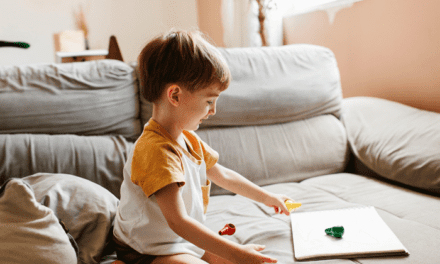Children are naturally inquisitive and will put anything in their mouths. However, if a child consumes non-edible substances on a regular basis, he may be suffering from Pica, an eating disorder.
Pica can cause serious physical and emotional health problems. As a result, it is critical to prevent or treat pica as soon as possible. This behavior is caused by a variety of factors. It is known as “culture-bound syndrome” in some areas, but the development of pica is mostly due to a lack of minerals and vitamins, or mental health issues.
What Is Pica In Children?
Pica is an eating disorder in which children consume non-food items on a frequent or regular basis. If a child eats mud, this is a classic example of this disorder. Non-food items include dirt, sand, paper, paint, chalk, hair, wood, and a lot of other things. It causes digestive issues and developmental delays in children. As this condition persists for a longer period of time, it can harm the child’s development.
Causes Of Pica
Pica in children can be due to a variety of factors that include:
- Taste developed for a specific item
- Mineral deficiency, such as zinc or iron deficiency (hookworm or Celiac disease can also be the cause for this)
- OCD, or obsessive-compulsive disorder, which is a mental disorder
- Chemical imbalance in the brain
- Trauma to the brain
- Neglect or deprivation by a mother
Symptoms Of Pica
So, how can parents tell if their children have pica? It is mostly detectable by observing the symptoms, such as those listed below. However, if you are unsure, you can always consult a pediatrician.
Some of the symptoms of pica disorder that can be seen in children are as follows:
- Consumption of non-food substances is repetitive and regular.
- Consuming non-food substances on a regular basis for more than a month.
Diagnosis
Many typical children chew on their nails and ice, as well as mouth their toys and hair. These are common practices. A person with pica, on the other hand, consumes nonfood items on a regular basis, even if they make them sick. Here’s how the diagnosis for pica takes place:
- A doctor will examine your child’s physical symptoms. These could include stomach pains or bowel issues.
- If your child is in a high-risk group for pica, your doctor may inquire as to how long you have observed your child eating non-food items.
- If the behavior has been going on for a month or more, your doctor may suspect pica.
- The doctor can also order some blood tests and X-rays. These can screen for anemia, detect toxins in the blood, and detect intestine blockages.
- A blood test to check your child’s iron and zinc levels may be ordered by your doctor. In some cases, a lack of these vitamins is thought to be a trigger for eating dirt and clay.
Consequences Of Pica In Children
Some of the consequences associated with Pica are:-
- Certain items, such as paint chips, may contain lead or other toxic substances, and consuming them can result in poisoning, increasing the child’s risk of complications such as learning disabilities and brain damage. This is the most serious and potentially fatal side effect of pica.

Eating non-food objects can make it difficult to eat healthy foods, resulting in nutritional deficiencies.
- Consuming indigestible objects, such as stones, can cause constipation or blockages in the digestive system, including the intestines and stomach. In addition, hard or sharp objects (such as paperclips or metal scraps) can cause tears in the esophagus or intestine lining.
- Bacteria and parasites found in dirt or other objects can cause severe infections. Some infections can cause kidney or liver damage.
Treatment Of Pica
Pica treatment addresses a number of issues. Your doctor treats your child’s illness as a result of eating non-food items.
- Your doctor will, for example, treat your child’s constipation, diarrhea, ulcer, intestinal tear, infection, or any combination of illnesses. If the doctor discovers that your child is deficient in iron or zinc, he or she will prescribe a vitamin supplement as well as dietary recommendations.
- Another area of focus for treatment will be the underlying cause of your child’s pica diagnosis. The doctor can talk to you about your child’s living situation, educate you as a parent, and refer your child to a behavioral or mental health specialist. When it happens due to mental health issues such as OCD, doctors may prescribe therapy, medication, or both.
- Because neglect may be a cause of pica, we recommend that parents work on communication skills and increase communication with their children.
- The parents can make a special box filled with edible food that the child can choose from instead of the non-food item that the child reaches for.
Can Pica Be Avoided?
No, we cannot avoid pica. Some children may be able to avoid it if they eat properly. If you pay close attention to eating habits and supervise children who have a habit of putting things in their mouths, you may be able to detect the disorder early, before complications arise. If your child has pica, you can reduce their chances of eating non-food items by keeping them out of reach in your home. Keep an eye on your child’s outdoor activities as well.
It is a condition that most children outgrow as they grow older. It usually clears up after a few months. High-risk populations, such as children and adults with intellectual or developmental disabilities, may require ongoing monitoring of their behavior and surroundings.
Conclusion
Pica is more common in children than in adults. It has been reported in children between the ages of 2 and 7 years old. As a result, we conclude that a thorough medical and personal history of children aids in a more accurate diagnosis and treatment plan. You must take your child to the doctor as soon as you suspect your child has pica.
In some cases, getting rid of pica can be quite simple, whereas in others, it requires professional assistance and advanced methods. Patience is crucial throughout this process. For an effective treatment, you must be positive and encouraging to your child.






